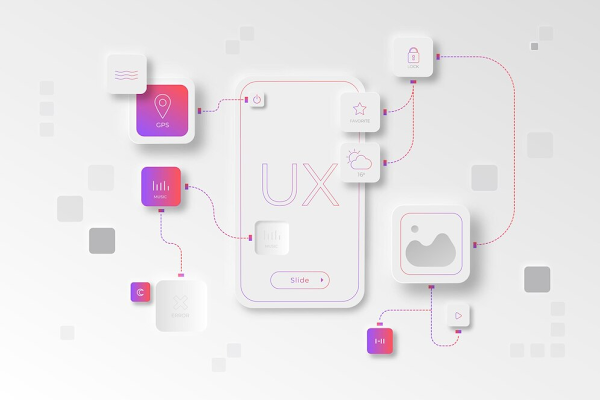As a seasoned UX/UI Designer, navigating the complex realms of User Experience (UX) and User Interface (UI) design entails mastering the 4 C's – Clarity, Consistency, Concision, and Contextuality. These principles act as guiding beacons, directing the design process toward creating optimal user experiences.
From Pixels to Perception: Crafting Optimal User Experiences Through Rigorous UX Research
As a seasoned UX/UI Designer, navigating the complex realms of User Experience (UX) and User Interface (UI) design entails mastering the 4 C's – Clarity, Consistency, Concision, and Contextuality. These principles act as guiding beacons, directing the design process toward creating optimal user experiences.
Understanding the 4 C's of UX
Clarity is the anchor, ensuring that information is easily understood. Consistency creates a harmonious experience, making users feel comfortable and confident. Concision trims unnecessary elements, keeping the interface focused and efficient. Contextuality tailors the user experience to specific scenarios, acknowledging the diverse contexts in which users interact.
The Four Stages of UX Research
UX research unfolds in four stages, each playing a crucial role in shaping design decisions. Discovery involves understanding user needs and market trends. Definition refines these insights into a clear problem statement. Design brings ideas to life through prototyping, and finally, Deployment ensures a smooth transition from design to implementation.
Exploring the 5 Facets of User Experience UX Design
User experience (UX) design encompasses five facets that collectively define the user journey. Information Architecture structures content for easy navigation. Interaction Design focuses on intuitive and responsive user interfaces. Visual Design ensures an aesthetically pleasing look and feel. Usability Testing validates designs through user feedback, and Accessibility ensures inclusivity for users with diverse needs.
Defining UX Design: An Explanation of the Process
UX design is the art of creating digital experiences that delight and fulfill user needs. The process begins with understanding users through research, diving into their behaviors, preferences, and pain points. Ideation and prototyping translate insights into tangible solutions. Testing and iteration refine designs based on user feedback, leading to the final implementation. Throughout, empathy is the driving force, putting users at the forefront of every decision.
Embarking on the UX Journey: Research as the North Star
In the journey from pixels to perception, UX research serves as the North Star. It's not just about designing what looks good but understanding what feels right for users. Research unveils the intricacies of user behavior, laying the foundation for designs that resonate and stand the test of real-world usage.
The Crucial Role of Prototyping in Design
Prototyping is the heartbeat of UX design. It transforms concepts into tangible representations, allowing designers to visualize and test ideas. Prototypes serve as a bridge between imagination and reality, facilitating a deeper understanding of how users will interact with the final product.
Iterative Design: Refinement through Feedback Loops
Design is a continuous loop of iteration. Through testing and feedback loops, designers refine their creations. Each iteration brings the design closer to perfection, addressing user concerns and ensuring that the final product aligns seamlessly with user expectations.
User-Centered Design: A Holistic Approach
User-centered design is the core philosophy that underpins the entire UX process. By actively involving users in decision-making, designers create solutions that not only meet functional requirements but also resonate with the desires and emotions of the people using the product.
Measuring Success: KPIs in UX/UI Design
Key Performance Indicators (KPIs) are the compass points for success in UX/UI design. Metrics like user satisfaction, task success rates, and conversion rates provide tangible insights into the impact of design decisions. These KPIs guide designers in evaluating the success of the crafted user experiences.
The Art of Visual Design: Beyond Aesthetics
Visual design goes beyond aesthetics; it's about creating an emotional connection with users. Colors, typography, and imagery are carefully chosen to evoke specific emotions and convey the brand's personality. The visual elements serve as the brushstrokes that paint a memorable and delightful user experience.
The Human Touch: Empathy in Design
Empathy is the secret sauce in UX/UI design. It's about understanding the user's journey, feeling their frustrations, and celebrating their successes. Designers with empathy create experiences that not only meet functional needs but also leave a positive and lasting impact on users.
Conclusion: From Craftsmanship to Connection
In conclusion, the journey from pixels to perception is a nuanced craftsmanship guided by principles, stages, facets, and empathy. As a seasoned UX/UI Designer, the goal is to not just design interfaces but to forge connections between pixels and perceptions, crafting user experiences that resonate, delight, and stand the test of time.
